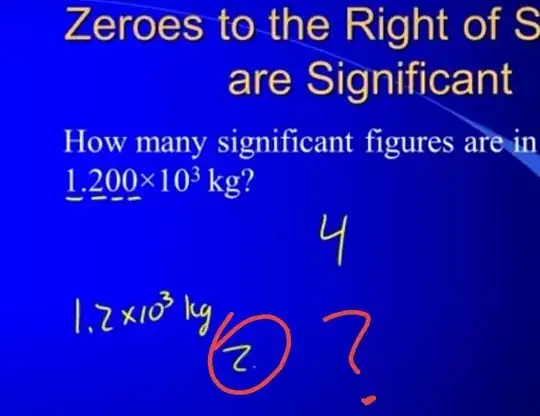Zeroes to the right are significant in error analysis. This is because when you make a measurement, you make an error (usually because your measurement device is not precise enough). The number of significant digits tells you how many digits correspond to the real weight of the object. The real weight might not be the one you measure, as real measurement devices are not perfect ;)
Your case:
In the first case, the measured mass is $1.200\times 10^{3}\,\text{kg}$. This means that the incertitude in the measurement is of order $0.001\times 10^{3}\,\text{kg}$.
Instead, if you measure $1.2\times 10^{3}\,\text{kg}$, then the error is of order $0.1\times 10^{3}\,\text{kg}$. This means that in this second case the uncertainty is a hundred times bigger!
An extreme case:
Let's say that you use a house scale to measure how much a hair weights. It will tell you that it weights $0.0\,\text{g}$. Of course, this doesn't mean that the hair doesn't have a mass! It just means that your scale is not precise enough. But one thing is sure, the mass of the hair will be bounded by
$$
0 \leq m_{hair} \leq 0.1 \,\text{g},
$$
where the $0$ is the real zero.
